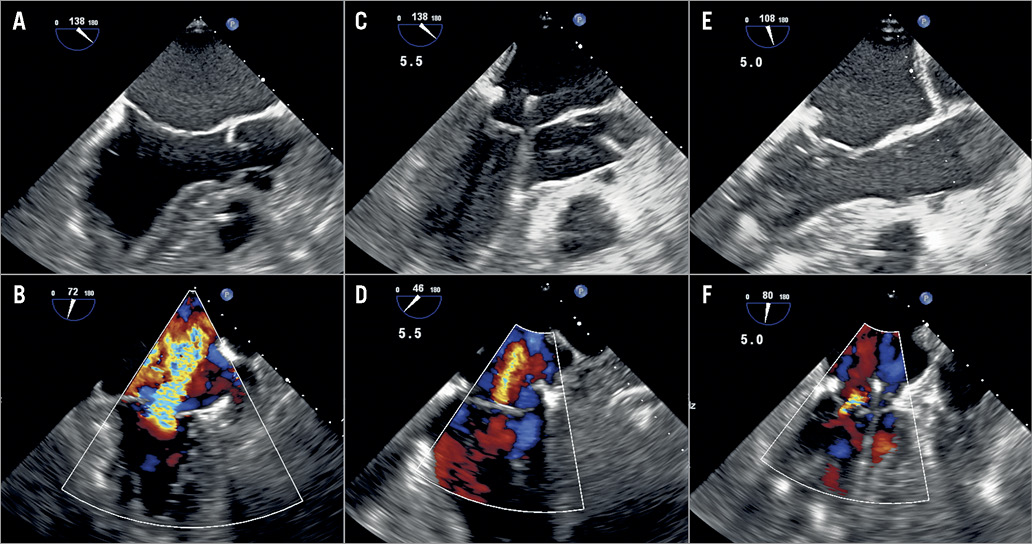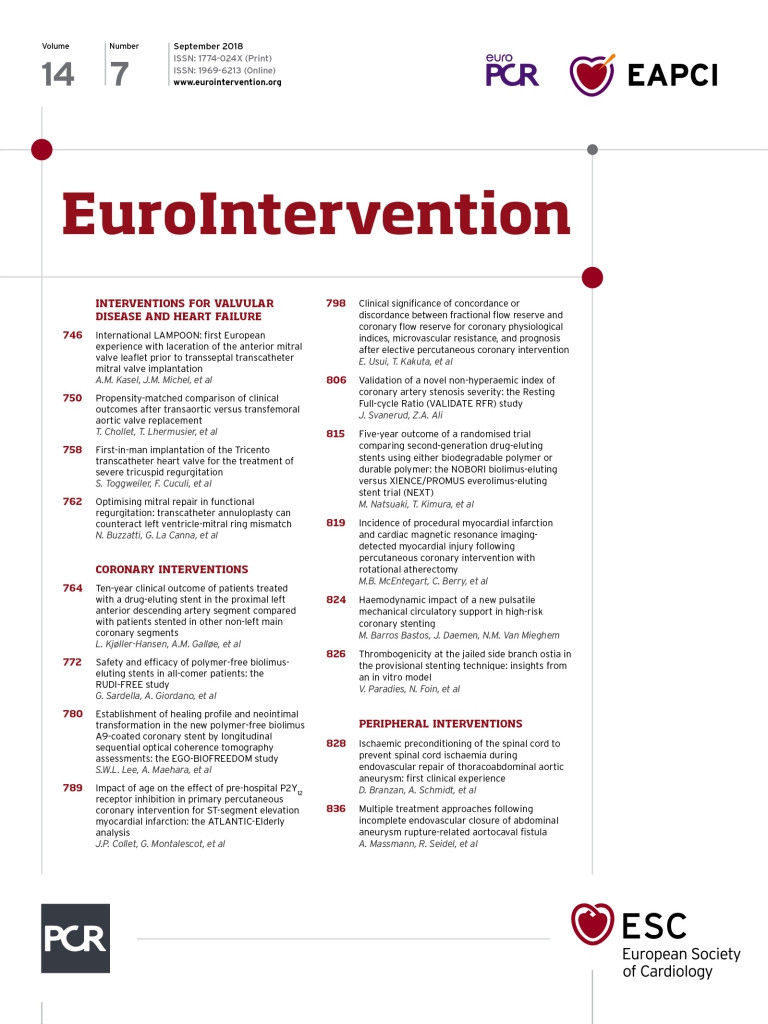

Mitral regurgitation (MR) recurrence remains a significant limitation of both surgical1 and transcatheter2 mitral repair for functional MR. After surgical undersized annuloplasty, residual leaflet tethering is the predominant mechanism of recurrent MR. Interestingly, a recent analysis from the CTS-Net3 on ischaemic MR suggested that worsened posterior leaflet tethering along with recurrent MR may occur more frequently when too small a ring is implanted above too large a ventricle, pushing the posterior annulus anteriorly while the free edge of the leaflet remains pulled down and outwards by the remodelled ventricle (ventricle-ring mismatch).
A 71-year-old gentleman was referred to our department due to severe symptomatic ischaemic MR (coaptation depth 5 mm, tented area 0.9 cm2 and extensive loss of coaptation due to significant annular dilation [septolateral 45 mm, intercommissural 45 mm]) (Panel A, Panel B). The left ventricle was severely dilated (69/46 mm, 127/78 ml), with an ejection fraction of 38% and a posterior wall akinesia (Moving image 1). The Heart Team decided to submit the patient to transcatheter mitral repair with the Cardioband Mitral Valve Reconstruction System (Edwards Lifesciences, Irvine, CA, USA).
A Cardioband size F was implanted as previously described4. The implantation procedure was straightforward without issues. After implantation, ring adjustment was performed to 5.5 (the maximum) in order to minimise MR. However, moderate residual MR was observed. The mechanism of MR was a worsening of the posterior leaflet tethering compared to baseline (Panel C, Panel D, Moving image 2, Moving image 3). We decided to reverse the implant adjustment from 5.5 to 5.0 in order to relieve the tethering and allow more freedom of movement of the posterior leaflet. Tethering was indeed decreased by the manoeuvre and MR was reduced to mild (Panel E, Panel F). The postoperative course was uneventful and the patient was discharged home with mild residual MR (Moving image 4).
In this patient, we observed in real time the previously described ventricle-ring mismatch physiopathological mechanism. We were able to correct it successfully with the reversible size adjustment feature of the device. Longer follow-up and larger numbers will be needed to judge the results and the implications of this observation fully. Nevertheless, as highlighted by this case, the possibility of working in real time on the loaded beating heart, the ability to optimise annular dimension and the option for reversibility are key procedural advantages of transcatheter annuloplasty in comparison to surgery.
In the pursuit of improved efficacy, mitral annuloplasty represents a fundamental addition to the transcatheter mitral toolbox to achieve an optimal, tailored, minimally invasive treatment.
Conflict of interest statement
The authors have no conflicts of interest to declare.
Supplementary data
Moving image 1. Baseline posterior wall akinesia.
Moving image 2. Leaflet tethering at baseline, 5.5 implant adjustment reversed to 5.0.
Moving image 3. Mitral regurgitation at baseline, 5.5 implant adjustment reversed to 5.0.
Moving image 4. Discharge residual MR.
Supplementary data
To read the full content of this article, please download the PDF.
Moving image 1. Baseline posterior wall akinesia.
Moving image 2. Leaflet tethering at baseline, 5.5 implant adjustment reversed to 5.0.
Moving image 3. Mitral regurgitation at baseline, 5.5 implant adjustment reversed to 5.0.
Moving image 4. Discharge residual MR.

